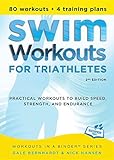How long before an Ironman should you start training?
Entering into the world of Ironman triathlons is a harrowing and rewarding endeavor, demanding not only physical stamina but also mental tenacity. One of the most frequent questions that aspiring participants have is, «how long before an Ironman should you start training?» The answer isn’t one-size-fits-all, but a general consensus suggests that a period of 12 to 18 months is ideal for someone who is starting from a moderate level of fitness.
For those who are new to the world of triathlons, this timeframe allows for a gradual build-up of endurance and strength across all three disciplines: swimming, biking, and running. It is crucial to give your body ample time to adjust to the rigorous demands of Ironman training, which not only includes physical exercise but also encompasses nutrition, recovery, and mental conditioning. Engaging in such a prolonged preparation phase helps mitigate the risk of injury and burnout, which can be common in such taxing events.
Within this preparatory period, athletes should consider breaking down their training into phases, focusing initially on building a strong aerobic base before transitioning into more specific training blocks. These might include periods where emphasis is placed on improving speed, power, and technique across the different segments of the Ironman. Incorporating rest weeks and tapering periods are also integral parts of a well-structured training plan, ensuring that the body can recover adequately and peak at the right time for race day.
How should a beginner train for an Ironman?
Training for an Ironman as a beginner is a formidable undertaking that requires a well-planned approach and dedication. For those new to the world of Ironman competitions, which comprise a 2.4-mile swim, a 112-mile bike ride, and a marathon 26.2-mile run, starting with a clear training plan is imperative. To embark on this journey, it’s crucial to understand the basics and progressively build your endurance and skill set across all three disciplines.
Establishing a Solid Base
Before diving into the specifics of Ironman training, it’s essential for beginners to build a solid foundation of general fitness. This involves engaging in regular cardiovascular activities such as swimming, cycling, and running, but at a moderate intensity. Initially, focus on building the duration and frequency of your workouts rather than the intensity. This foundational period also presents an excellent opportunity to incorporate strength training into your routine, which can greatly enhance your overall performance and reduce the risk of injury.
Creating a Structured Training Plan
Once a base level of fitness has been established, the next step is to develop a structured training plan that gradually increases in intensity and volume. This plan should cover all three disciplines and ensure a balanced approach to avoid overtraining in one area at the expense of others. A typical beginner’s training plan spans 6 to 12 months, allowing adequate time for the body to adapt and grow stronger. Incorporating rest days and lighter training weeks into your plan is crucial for recovery and progression.
Remember, embarking on an Ironman journey is as much about mental preparation as it is about physical readiness. Staying consistent, setting realistic goals, and being patient with your progress are key to successfully reaching your Ironman aspirations. As a beginner, it’s also advisable to seek guidance from a coach or join a training group to gain insights and support from more experienced athletes.
Can you train for an Ironman in 1 year?
The question of whether you can train for an Ironman in 1 year is one that piques the interest of many aspiring triathletes. The answer is both simple and complex, resting heavily on the individual’s current fitness level, dedication, and the amount of time they can commit to training.
For someone with a baseline of physical fitness, perhaps with experience in shorter triathlon distances, a year might be a feasible timeline. Training for an Ironman is an intense commitment, often requiring at least 10 to 20 hours per week dedicated to swimming, cycling, and running. The key is not just about racking up mileage but also incorporating strength training, recovery, and nutrition strategy into your regimen.
Breaking Down the Training Plan
- Initial phase: Focus on building a strong aerobic base and gradually increasing endurance.
- Build phase: Introduce more intense workouts and longer distance sessions.
- Peak phase: Reach the maximum volume of training, including back-to-back long workouts.
- Taper phase: Reduce training load to recover and prepare the body for race day.
Embarking on this journey requires a substantial level of commitment and discipline. It is vital to listen to your body and adapt your training plan accordingly to prevent injuries. While a year might seem like a short time to prepare for such a demanding race, with the right mindset and approach, it’s certainly within the realm of possibility for committed individuals.
Is 10 months enough time to train for an Ironman?
Training for an Ironman is a significant commitment, often requiring a structured plan to ensure the athlete is ready for the demanding swim, bike, and run segments. A common question among aspiring Ironman participants is whether 10 months is a sufficient timeframe to prepare for this grueling event. The simple answer is, with the right approach, it is certainly possible.
To embark on a 10-month training journey successfully, it’s essential to assess current fitness levels and experience in the disciplines of swimming, biking, and running. For beginners, this period can be adequate if the individual has a base level of fitness and commits to a consistently structured training plan. It’s crucial to gradually increase the volume and intensity of workouts to minimize the risk of injury while maximizing endurance and strength gains.
For more experienced athletes, 10 months can offer ample time to refine technique, build on existing endurance, and focus on race-specific training. Incorporating techniques such as interval training, brick workouts, and open water swims can be invaluable. Additionally, emphasizing recovery and nutrition plays a pivotal role in ensuring the body can handle the increased demands and recover efficiently.









